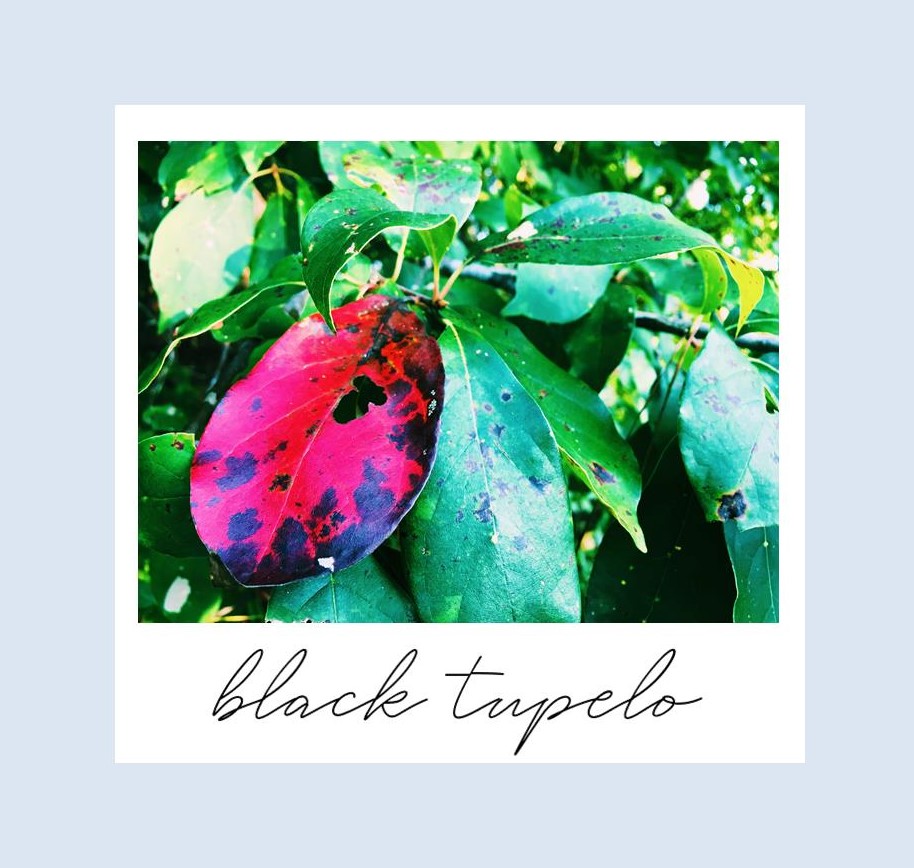
Download .pdf version
Columbia, SC—As South Carolinians extend a warm and thankful welcome to cooler temperatures, there is so much to appreciate in nature during the season of autumn. The cooling temperatures send deciduous trees into hibernation for the winter, but first, the emerald green leaves transform to a ruby red, followed by golden yellows, radiant oranges, and deep purples.
One tree simply does it better than the rest, however. A horticulturalist may refer to the black tupelo as Nyssa sylvatica, but you can call it a black tupelo or black gum tree. It is one of the first trees to embark upon this colorful journey each year, and it is most famous for its vibrant and intense fall-iage.
Most take advantage of the black tupelo’s beauty in landscaping. It thrives in wet soil, but can grow in dryer climates as well. It is native to the Eastern US, including South Carolina. It is slower to reach full maturity, as it can grow 1-2 feet a year until it reaches 30-50 feet in height. The growth rate can be sped up through proper fertilization and irrigation practices, however. Full sun exposure allows for a quicker growth rate, and the extra sunlight only illuminates the black tupelo’s colorful leaves even more. The black tupelo is much more than its looks, however.
Planting one of these beauties can assist with erosion control by anchoring loose soil habitats with a root system. A black tupelo can also attract a wide variety of wildlife. At the beginning of autumn, it grows small and blue fruits that birds love to snack on during southern migration. Mammals including foxes, squirrels, opossums, and raccoons also eat these fruits. The tree is also a host plant for several moth species, such as the tupelo leaf-miner. Moths are lesser-known pollinators, but deserve the same recognition as their buzzing counterparts.
As the black tupelo approaches and achieves maturity, it is important to look out for signs of disease and pests. The most prevalent disease is that of the black leaf spot, which is caused by a potentially harmful fungus. The disease can cause the leaves to turn prematurely, and freckle some of the leaves with black spots. Over several years with the disease, the black tupelo may weaken and have a hard time reaching its colorful potential each autumn.
The tree may also become more susceptible to disease if it finds itself in soil that is alkaline, or has a high pH. The best thing to be done for the black tupelo is to keep it watered during dry spells, and lightly fertilize it throughout the spring. Your black tupelo should have no problem staying healthy as long as its soil stays acidic, moist, and properly-drained. When its beauty is combined with its easy management and environmental uses, the black tupelo makes the perfect addition to any landscape, so incorporate it into yours today!
Download .pdf version
# # #
Conservation Districts are political subdivisions of state government under the local direction of five-member Boards of Commissioners. In South Carolina, Conservation District boundaries conform to County boundaries. The Richland Soil and Water Conservation District promotes the wise use and care of natural resources for long-term sustainability.
Contact
Richland Soil and Water Conservation District
2020 Hampton Street, Room 3063A
Columbia, SC 29204
Phone (803) 576-2080
Fax (803) 576-2088
E-mail soilandwater@rcgov.us
Facebook www.facebook.com/rswcd